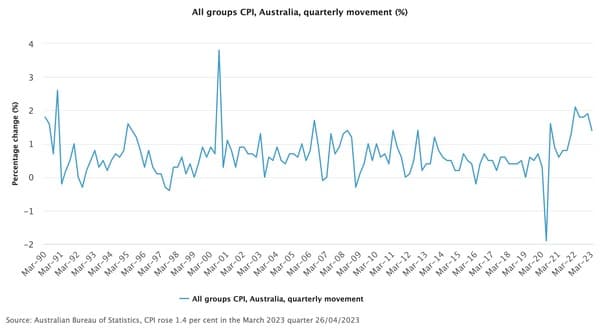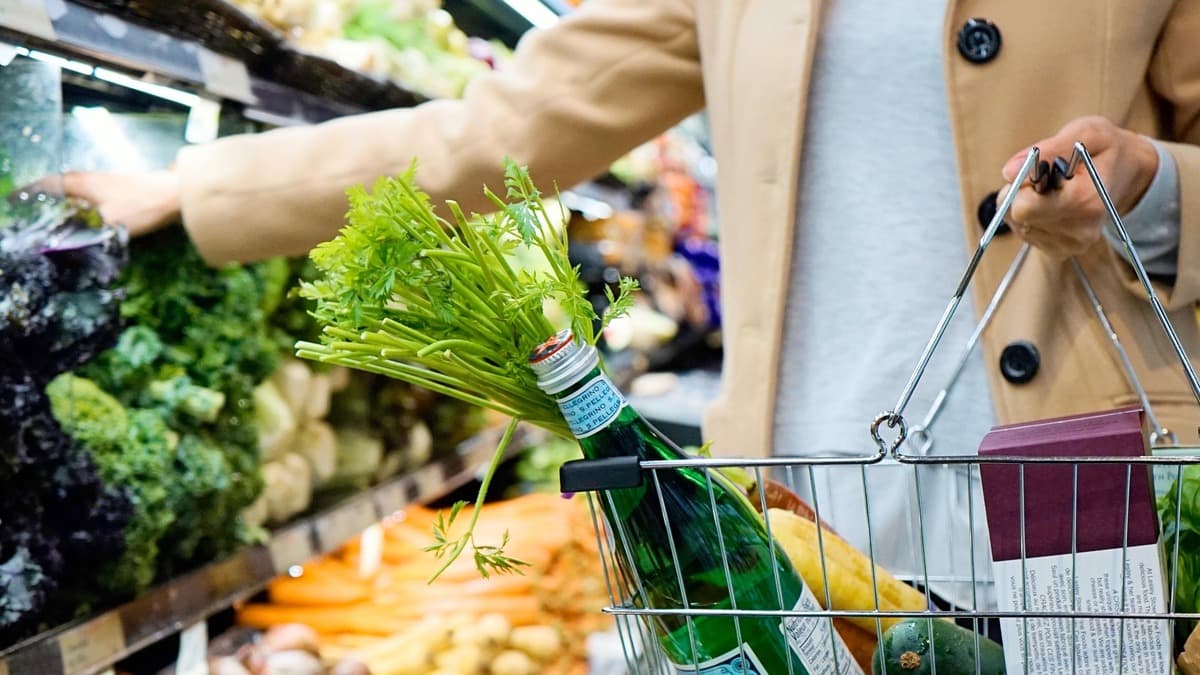Australia’s inflation rate in the first quarter sees a decline from a 33-year peak, resulting in the smallest cost increase in over a year.
Australia’s inflation rate showed a decline in the first quarter of 2023, with the headline Consumer Price Index (CPI) rising by 1.4 per cent. However, the CPI recorded an annual rate of 7 per cent over the twelve months leading up to March 2023, which is slower than the 7.8 per cent pace recorded in the previous quarter.
Inflation falls to 7.0 pct
SMEs in Australia could face higher costs of goods and services as a result of the CPI increasing by 1.4 per cent in the quarter and 7.0 per cent over the year ending March 2023. This may lead to increased prices for consumers, and if SMEs cannot pass on the extra costs, their profitability could be impacted. However, the small decrease in inflation from the previous quarter may offer some respite for SMEs in terms of cost management.

Michelle Marquardt, ABS head of prices statistics, said, “CPI inflation slowed in the March quarter, with the quarterly rise being the lowest since December 2021. While prices continued to rise for most goods and services, many of these increases were smaller than they have been in recent quarters.”
The rise in CPI was largely attributed to significant price increases in Medical and hospital services (up by 4.2 per cent), Tertiary education (up by 9.7 per cent), Gas and other household fuels (up by 14.3 per cent), and Domestic holiday travel and accommodation (up by 4.7 per cent). This lower increase in CPI suggests that there may be some respite from the recent surge in prices, and it is an essential indicator of the overall inflationary pressure in the country.
“Prices for medical and hospital services typically rise in the March quarter as GPs and other health service providers review their consultation fees, and the Medicare Safety Net is reset at the start of the calendar year. This year some private health insurance premiums also increased in January, adding to the price rise for medical and hospital services,” said Ms Marquardt.
“Tertiary education fees are also indexed at the start of the year. This quarter additional strength was seen in tertiary education as changes in student contribution bands and fees introduced in 2021 as part of the Jobs-ready Graduates Package continued to flow through to the index.”
Gas and household fuel prices surge
Gas and other household fuel prices rose across all eight capital cities, with Melbourne seeing the highest increase at 22.7 per cent. The increase in prices was attributed to major events such as the ongoing war in Ukraine and unplanned power station outages in the past year.
Rise in domestic accommodation prices
Demand for domestic accommodation surged due to school holidays and the return of major events, resulting in price increases. However, domestic airfare prices fell slightly, offsetting the increases from recent quarters.
Rising food prices
Food prices continued to rise, driven by fruit, vegetables, snacks, and confectionery increases. Potato shortages due to wet weather in key growing regions and higher prices of edible oil and packaging materials contributed to the rise in snack products. Fruit prices also went up due to damaging weather in apple and avocado growing regions in late 2022, along with typical seasonal increases for apples and citrus.
Offset in international holiday travel prices
The rise in international holiday travel and accommodation prices was partially offset as some destinations entered their off-peak seasons following significant increases in recent quarters.
Price falls in retail
Discounting activity by retailers resulted in price falls across furniture, major and small appliances, and clothing.
RBA interest rate decision approaches
The core inflation rate was also below expectations, indicating a reduction in the need for another interest rate hike. As a result, investors responded by reducing the likelihood of the Reserve Bank of Australia (RBA) raising rates at its May 2 meeting after a series of 10 previous hikes, including a pause in April.
According to Dylan Zhang, an ASX Equities Analyst at the online brokerage platform Stake, the RBA’s decision to pause interest rates last month has allowed for more time to evaluate the effects of rate hikes.
“Last month, interest rates were paused by the RBA, giving the central bank more time to assess the effects of its rate hikes. Today’s 7 per cent headline inflation figure is slightly higher than the expected 6.9 per cent CPI but comes well below the 7.8 per cent read from last quarter. This further supports the argument that inflation has peaked, causing the market to react positively.
“The largest price contributors were in education and health, as yearly premiums have increased. Rents and housing have continued to skyrocket, but higher interest rates are actually fuelling this figure as mortgage holders pass their increased repayments to renters. There are also other factors at play in regards to rent inflation, such as low supply paired with high migration, which won’t be solved through higher rates alone,” he added.
While the headline inflation figure is still high, Zhang believes higher rates will be with us for some time. He notes that “companies with established revenue streams, or strong pricing power, are likely better to weather the storm during an era of high rates.”
“Last week’s unemployment data, which showed that job growth was well above expectations, means there is arguably still a case for the RBA to hike rates. Yet the RBA has been increasingly dovish, and the 50 per cent drop in First Republic Bank stock overnight suggests fears of a banking crisis could be reignited. Based on today’s market reaction, it seems that investors are banking on another pause in May.
“In the short to medium term, companies with established revenue streams, or strong pricing power, are likely better to weather the storm during an era of high rates. That said, it’s important to remember that markets are forward-looking, and some investors will be looking at growth stocks in anticipation of a future rally.”
More here.
Keep up to date with our stories on LinkedIn, Twitter, Facebook and Instagram.


